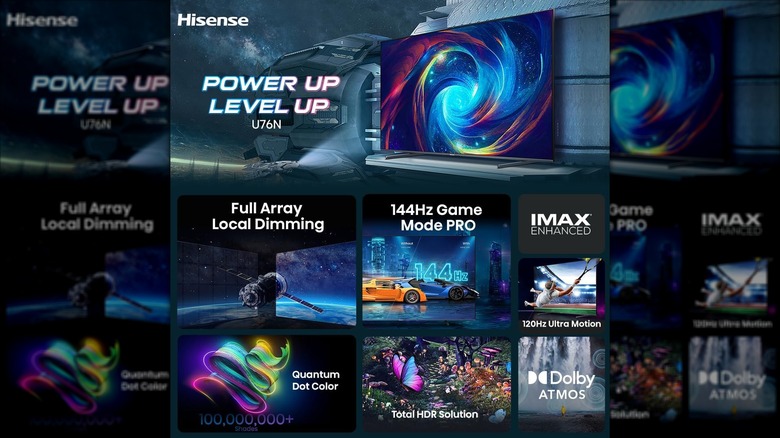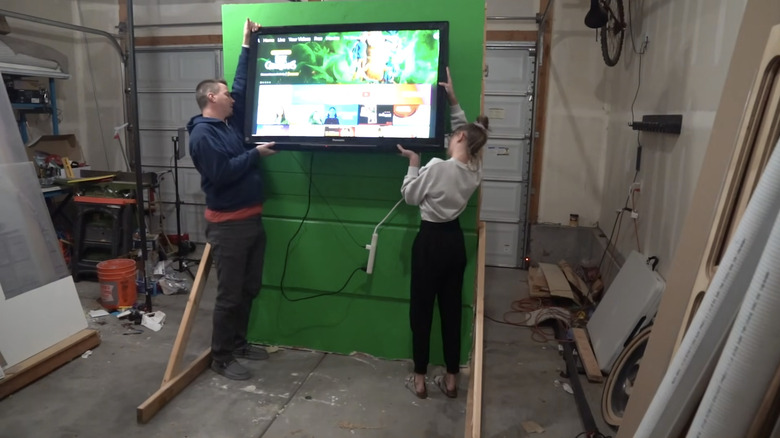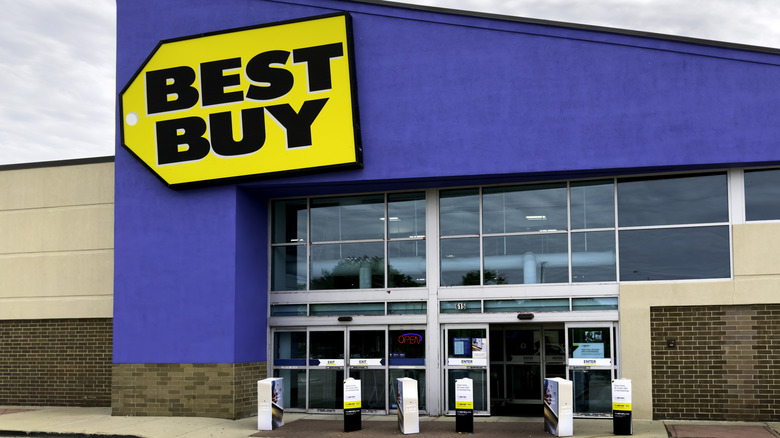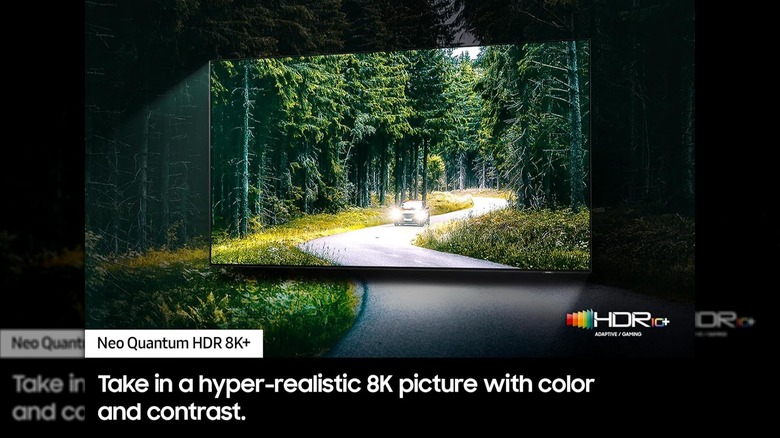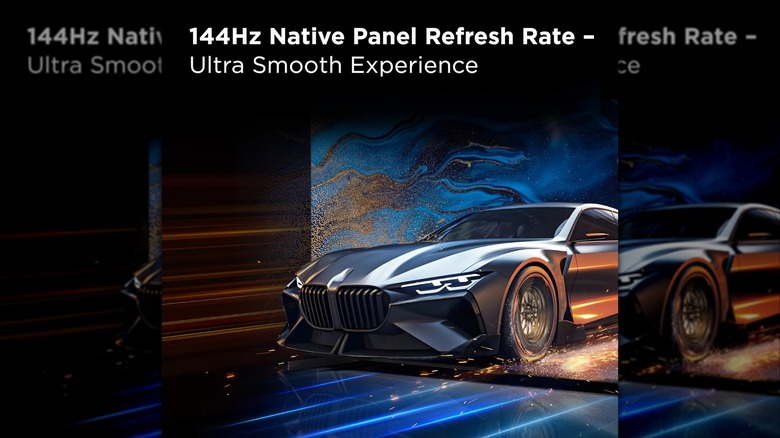TV Buying Guide: How To Confidently Shop For A TV Online In 2025
We may receive a commission on purchases made from links.
In many ways, buying a new TV has never been easier. There are many trusted authorized resellers for all the key brands, virtually all of which offer free delivery. The relative lack of subjectivity in assessing a TV's pros and cons makes it something you can comfortably order online without needing to demo the TV first.
We're not talking about a category like home audio, where various speakers, headphones, etc., are tuned differently to appeal to different users, or something similarly subjective like mattresses. Trying out a TV in a store isn't a representative experience as it's likely to be in "demo mode," designed to make the picture look better under in-store lighting conditions, and most TV reviews are based on objective factors. As a result, you're not really risking anything by making an informed decision to buy a TV that you've never seen up close.
Having said all that, the experience can still be a daunting task. There are more features and price points to consider than ever before. Some features, like 8K resolution, dramatically increase the price without much benefit, while others should be on most TV buyers' must-have lists. You also need to ensure you understand the environment you're putting your new TV in, like what kind of walls you have, if you're planning on mounting the TV.
Let's take a look at some key points to keep in mind to confidently shop for a TV.
Understand that some features are exclusive to more premium quality TVs
As consumer electronics with something of a subjective component go, it's much easier to make a blind buy of TVs than it is to buy, say, home theater speakers. You might prefer the look of one TV over another, but what you see in stores isn't usually indicative because they're often in demonstration mode, designed to enhance picture quality under store conditions, such as fluorescent lighting. For many model lines, it's easy to find a consensus from professional reviews, but there's also something else that makes it easier to discern quality TVs online: certain checkbox features that tend to only be in higher-quality TV models. Even a budget TV with some of these features is likely to deliver a significantly higher-quality picture than a budget TV without them.
For example, there's full-array backlighting with local dimming, where the LED backlights are laid out throughout the TV in a grid pattern and adjust themselves to light and dark scenes, greatly improving contrast ratios. It might not be the infinite contrast of OLED TVs, where each pixel is its own light source, but it's far superior to LED alternatives like direct-lit and edge-lit. Quantum dot color enhances color accuracy and vibrancy, while refresh rates above 60Hz improve gaming and movie playback performance. Additionally, ATSC 3.0/NextGen TV tuners help you future-proof your TV for when 4K over-the-air broadcasts start airing domestically.
Know everything you can about your walls if you're looking to mount
Large TVs have become more and more affordable over the years, and the switch to flat-screen TVs as the standard made them wall-mountable, which made it easier for the average person to find spots for them. However, the unfortunate reality is that plenty of people live in homes with walls that can't support mounting TVs, or at least medium to large flat screens.
If you're wall-mounting, you're best off if your home has wooden studs running through the walls. This provides a solid, stable, and supportive mounting point, although the positioning of the studs could theoretically limit your options for positioning the TV, depending on how exactly they're spaced out. Other kinds of walls vary wildly in how well they can support a TV, requiring more specialized knowledge and tools than mounting on a stud does.
From personal experience, this can cause more trouble than it's worth. I always hired installers online to mount my TVs. Then, one mounted a TV in a new apartment without telling me that the wall had no studs, and also seemingly used the wrong kind of anchors in the process. As it turned out, I had concrete board walls, which can't support even mid-sized TVs, and especially not on swivel mounts, so I had to get a new TV stand. Overall? Conduct in-depth research and stick to trusted installers who communicate well so you know you're buying the right size TV for your home.
Understand that comparison shopping is a lot easier than it used to be
One area where you don't need to bother nearly as much as was necessary in the past is comparison shopping. Which is to say that at an absolute minimum, if you're looking at Best Buy and Amazon, they tend to be within a dollar of each other, matching each other's prices when one of them offers a discount on a TV. If you look at, for example, our 2025 Super Bowl TV deals rundown, a significant number of the discounts are available at both Best Buy and Amazon. If you're shopping at the biggest online TV resellers, you can safely assume that they're matching their competitors' best deals, and you can relax a bit.
Having said all that, even if you're looking elsewhere, you can be pretty confident that most major appliance resellers have price-matching policies or low-price guarantees that ensure you will get the best deal possible, even if you prefer to shop elsewhere. Abt.com, the catalog retailer that dates back to the 1930s, has a generous price matching policy, as does P.C. Richard and Son, a 115-year-old mainstay of consumer electronics and appliance sales in New York and the surrounding states. The same also goes for B&H Photo, the electronics and photography store in midtown Manhattan that's also a mail-order powerhouse, as well as Arizona's Walt's TV. Those just scratch the surface, but you get the idea: you can get the best price wherever you want.
Disregard the hype for 8K TVs
One complication that you may encounter when shopping for TVs is seeing that ultra-premium, expensive TVs with an 8K display resolution are available. The step-up from HD to 4K was noticeable and totally worth it to the point that the step-up to 8K must be similarly worthwhile, right? Well...not so much. 8K TVs aren't close to worth the money as of yet, and there aren't any clear indications that they will be anytime soon.
The improvements from the jump from 4K to 8K aren't particularly noticeable to the naked eye, to the point that the main benefits from shooting in 8K come on the production side, since you can zoom in 4x and still get a full 4K picture or zoom in 16x and get a full HD picture. Even setting that aside, the amount of 8K content is minimal at best, and that small amount of available streaming content requires a significantly faster broadband internet connection than 4K streaming does. Despite the above facts, which suggest that there's little use for 8K TVs, these TVs are incredibly expensive.
Just how unnecessary are 8K TVs? CNET, a trusted source for tech news, reviews, and information for 30 years, has a whole article about why no 8K TVs are included in the site's best TVs of 2025 list. "If prices fall, 8K content suddenly becomes widely available, or there's some other major and unexpected shift, maybe we will in the future," the article concludes.
Keep refresh rates in mind for the optimal gaming experience
If you plan to game on your TV using a current console or a high-end gaming PC, consider a TV with a refresh rate above 60Hz and variable refresh rate support. The refresh rate is the number of times the screen refreshes per second, and in gaming, a higher refresh rate makes it so that the TV to better keep up with games running at a higher frame rate, allowing for smoother, clearer motion and more responsive controls.
Budget TVs tend to top out at 60Hz, which was the standard for American and Japanese TVs during the standard-definition era. More premium TVs offering refresh rates like 120Hz, 144Hz, or 240Hz, usually bundled with variable refresh rate support. Case in point: Hisense's various TV model lines, where the best 60Hz TV is the U6 series, the top of the budget line, and faster refresh rates come standard with the U7 series and above.
There's also an additional bonus that comes with buying a TV with one of the standard higher refresh rates: a better movie-watching experience. That's because content shot on film or to resemble film runs at roughly 24 frames per second, meaning that, to play smoothly on a 60Hz display, some frames need to be repeated. This can cause a "judder" effect, but the other available premium refresh rates are all divisible by 24, so repeating frames isn't necessary on those TVs.

